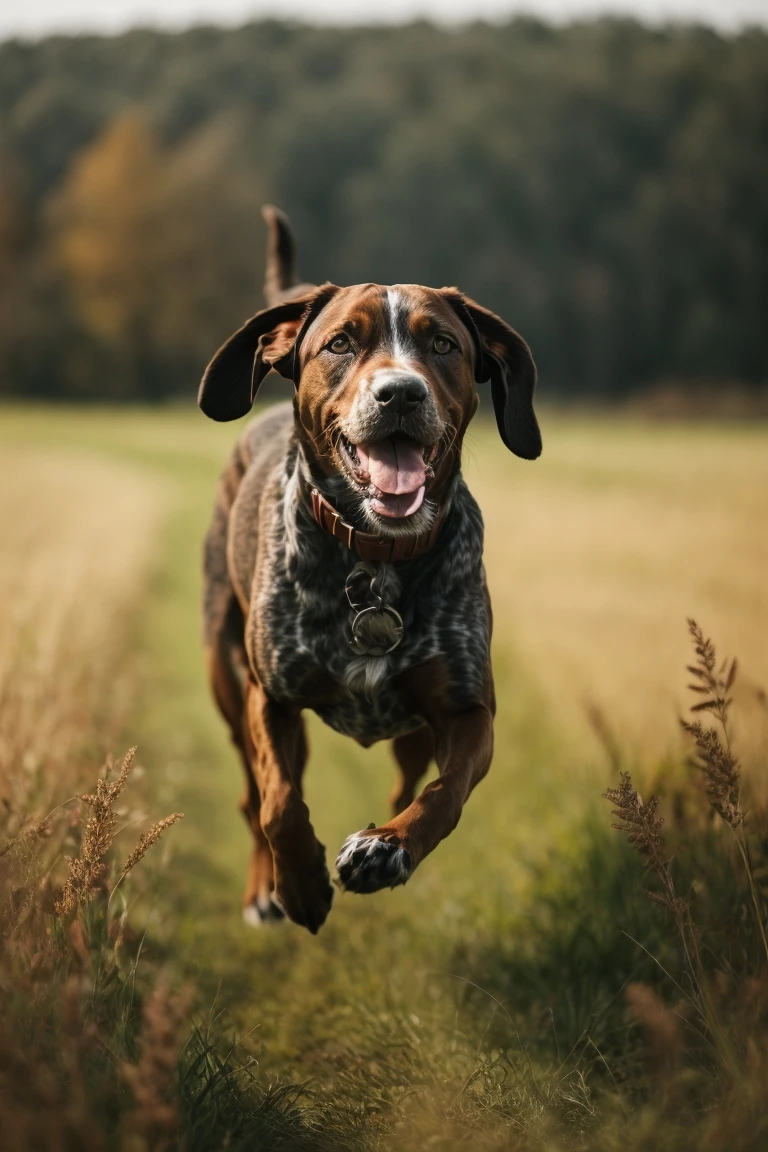How to Exercise a German Shorthaired Pointer: A Complete Guide

German Shorthaired Pointers (GSPs) are known for their boundless energy and sharp intelligence. Originally bred as hunting dogs, they possess a natural drive to work, chase, and play. This guide will provide you with a comprehensive understanding of how to properly exercise your GSP, ensuring a happy and healthy companion.
Table of Contents
- Introduction to the Breed
- Importance of Exercise for GSPs
- Types of Exercise and Activities
- Step-by-Step Guide to Structuring Exercise
- Common Problems and Troubleshooting
- Conclusion
Introduction to the Breed
Before diving into the exercise specifics, let's understand the breed a little better.
"German Shorthaired Pointers are versatile dogs known for their keen sense of smell, agility, and endurance. Their short coat, athletic build, and deep-set eyes reflect a breed designed for active work."
Importance of Exercise for GSPs
- Physical Health: GSPs are athletes. Regular exercise keeps them in top shape and prevents obesity.
- Mental Stimulation: Being working dogs, they need challenges to keep their minds sharp.
- Prevent Destructive Behavior: Under-exercised GSPs can develop destructive habits due to pent-up energy.
- Strengthen the Bond: Engaging activities deepen the bond between you and your dog.
Types of Exercise and Activities
There's more to exercising a GSP than just a daily walk. Here's a list of activities tailored for their needs:
1. Running
Why It's a Good Choice:
GSPs are built for endurance and speed. Their lean muscular frame and enthusiasm make them ideal running partners.
Getting Started:
- Begin with short distances, gradually increasing as your dog builds stamina.
- Choose soft terrains like grass or dirt trails over asphalt to protect their paws and joints.
- Use a comfortable harness and leash to maintain control.
2. Fetch Games
Why It's a Good Choice:
Tapping into their natural retrieval instincts, fetch games not only provide physical exercise but also mental stimulation.
Getting Started:
- Use a variety of items: balls, frisbees, or dummy birds to keep their interest.
- Start in a fenced area or open field.
- Ensure you teach commands like "fetch" and "drop" to make the game structured.
3. Swimming
Why It's a Good Choice:
Swimming offers a full-body workout and is especially good for dogs with joint issues since it's low-impact.
Getting Started:
- Introduce your GSP to water gradually, preferably in a shallow area.
- Use toys to encourage them to venture deeper.
- Always supervise, and consider a dog life vest for added safety.
4. Agility Training
Why It's a Good Choice:
GSPs are agile and intelligent. Agility courses challenge them mentally and physically, enhancing their flexibility and obedience.
Getting Started:
- Start with basic obstacles like tunnels or low jumps.
- Use treats or toys as motivation.
- Enroll in a beginner's agility class for structured training.
5. Scent Games
Why It's a Good Choice:
It taps into their inherent tracking abilities, making them use their brain and nose simultaneously.
Getting Started:
- Begin indoors. Hide treats or toys in one room and let your GSP find them.
- As they get better, make the hiding spots more challenging or extend the game outside.
- Use commands like "find" or "search" to initiate the game.
6. Hiking
Why It's a Good Choice:
It provides varied terrains and sceneries, challenging your GSP's muscles and senses.
Getting Started:
- Start with short, easy trails ensuring your dog is accustomed to the harness and leash.
- Gradually move to longer and more challenging hikes.
- Always carry water for both you and your dog, and be wary of the local wildlife.
By understanding each exercise's nuances and benefits, you can create a well-rounded regime that caters to the physical and mental needs of your German Shorthaired Pointer, ensuring they remain healthy, happy, and engaged.
Step-by-Step Guide to Structuring Exercise
1. Assessment
- Age: Puppies and older dogs won't have the same stamina as a young adult GSP.
- Health: Ensure your dog is in good health. Consult your vet before starting any rigorous exercise regime.
2. Routine Creation
- Morning Burst: Start with a quick 10-15 minute game of fetch or a brisk walk.
- Midday Activity: A 30-minute session of a chosen activity (running, swimming, etc.)
- Evening Wind Down: A leisurely walk or a calm game of scent tracking in your garden.
3. Consistency
Maintain a consistent routine. Dogs thrive on predictability.
4. Monitoring
Keep an eye on your dog's response. If they seem too tired or uninterested, it might be time to switch activities.
5. Cool Down
After rigorous activity, ensure a 10-minute cool-down period. It helps in preventing injuries and calms your dog.
6. Hydration
Always have fresh water accessible, especially after exercise.
7. Dietary Considerations
Ensure your GSP's diet complements their activity level. Active dogs may require more protein and calories.
Common Problems and Troubleshooting
Problem: Overexertion
GSPs often don't know when to stop.
- Solution: Monitor your dog for signs of fatigue such as excessive panting, limping, or disinterest. Ensure regular breaks and avoid exercising during peak heat hours.
Problem: Boredom with Repetition
Doing the same activity every day can bore your GSP.
- Solution: Mix up the activities. One day could be for swimming while another for agility training.
Problem: Refusing to Engage in Activities
Sometimes, your GSP might refuse to play fetch or run.
- Solution: It might be due to health issues or lack of interest in that particular game. Consult your vet and try introducing a new exercise.
Conclusion
Exercising your German Shorthaired Pointer is a rewarding experience that enhances your bond and ensures their happiness and health. By understanding their needs and being attuned to their responses, you can create an exercise regime that keeps your GSP thriving. Remember, the key is consistency, observation, and most importantly, enjoying the process with your four-legged friend.